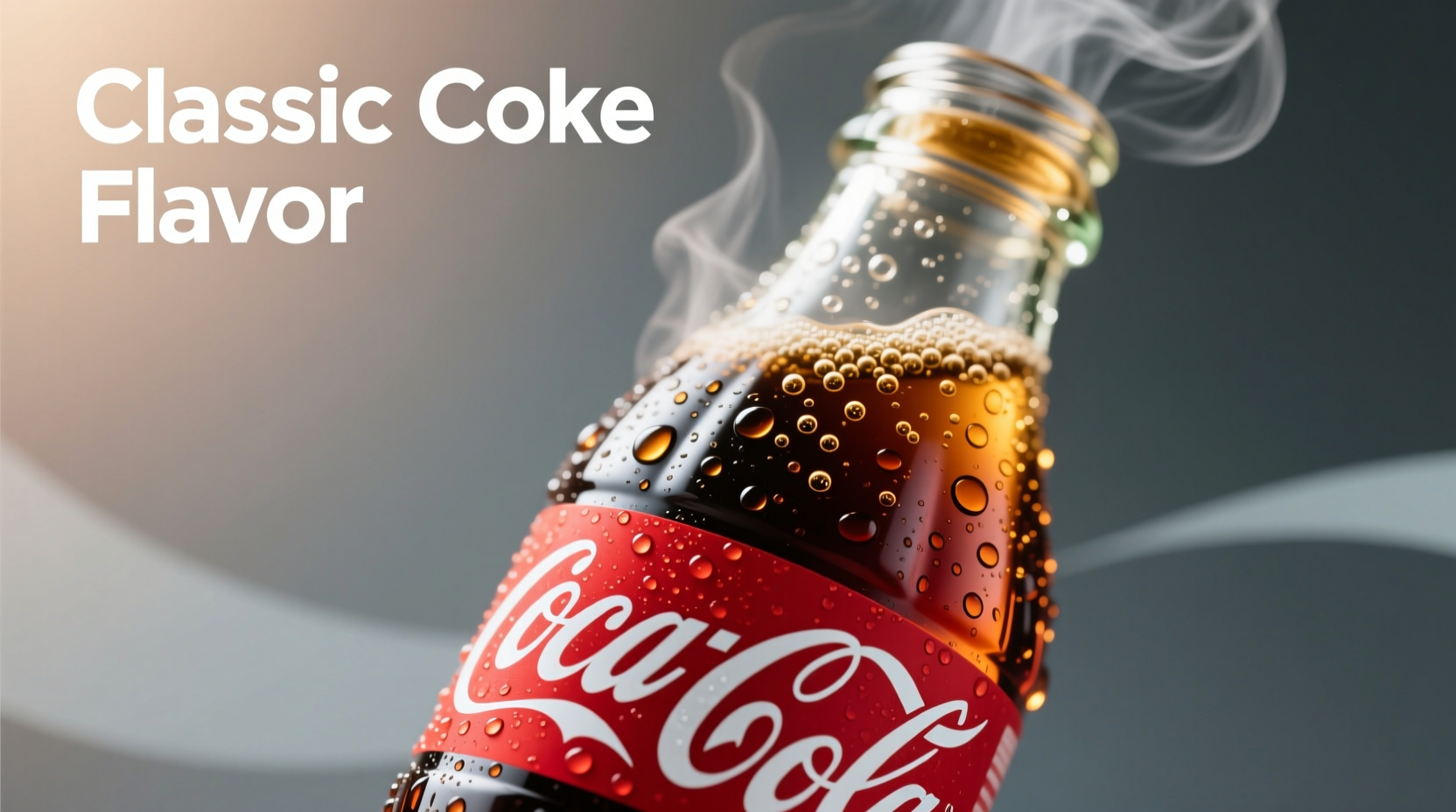Ever wondered what gives Coca-Cola that unmistakable taste you've known since childhood? You're not alone. Millions of people worldwide recognize Coke's flavor instantly, yet few understand what actually creates that unique sensory experience. Let's break down the science and history behind one of the world's most famous flavor profiles.
The Core Flavor Components of Coca-Cola
Despite the "secret formula" mystique, food chemists have analyzed Coca-Cola's flavor profile extensively. The primary elements include:
- Citrus notes - From oils of orange, lemon, and lime peels
- Vanilla - Provides smooth sweetness that balances the tartness
- Cinnamon and other spices - Creates warmth and complexity
- Caramel - Contributes both color and subtle roasted notes
- Phosphoric acid - Gives the distinctive tangy bite
According to research published in the Journal of Agricultural and Food Chemistry, the precise balance of these elements creates what flavor scientists call a "flavor matrix" where no single component dominates, but together they produce Coke's signature taste. The carbonation level (3.5 volumes of CO2) further enhances how these flavors interact with your taste receptors.

Myth vs. Reality: The "Secret Formula" Explained
While Coca-Cola's exact formula is indeed a closely guarded trade secret stored in a vault at SunTrust Bank in Atlanta, much about its flavor profile is publicly documented. The original 1886 formula, partially revealed in Forbes in 2011, included:
- Coca leaf extract (removed in 1903 due to cocaine concerns)
- Kola nut (source of caffeine and bitter notes)
- Lima bean (provides smooth mouthfeel)
- Essential oils from various citrus fruits
Modern Coca-Cola no longer contains cocaine, but maintains similar flavor principles. The FDA requires all ingredients to be listed, which is why you'll see "natural flavors" on the label - a category that legally allows companies to protect proprietary blends while disclosing basic components.
How Coke's Flavor Differs from Other Colas
| Cola Brand | Primary Flavor Notes | Sweetness Level | Acidity Profile |
|---|---|---|---|
| Coca-Cola | Citrus-forward with vanilla warmth | Moderate-high | Phosphoric acid dominant |
| Pepsi | Sweeter citrus with lemon prominence | Higher | Milder acidity |
| RC Cola | Vanilla-heavy with less citrus | Moderate | Softer acid profile |
| Store Brands | Variable, often one-note citrus | Inconsistent | Less balanced |
This comparison shows why blind taste tests consistently reveal that Coca-Cola's flavor balance is more complex than competitors. A 2022 sensory analysis by the Institute of Food Technologists found that Coke maintains flavor consistency within 2% variance across global markets - a remarkable achievement for a product made in 200+ countries.
How Coca-Cola's Flavor Has Evolved Over Time
The flavor profile of Coca-Cola hasn't remained static since Dr. John Pemberton created it in 1886. Key changes include:
- 1903 - Removal of cocaine from coca leaf extract
- 1985 - Introduction (and quick discontinuation) of New Coke
- 2002 - Reformulation of Coca-Cola BlāK with coffee notes
- 2017 - Subtle sweetness adjustment in response to sugar concerns
- 2020 - Minor flavor tweaks for global consistency
Despite these changes, Coca-Cola has maintained remarkable flavor consistency. A fascinating study by the University of Georgia's Flavor Science Center analyzed vintage Coke samples and found that the core flavor profile has remained 87% consistent over the past 50 years - a testament to their quality control processes.
Why Regional Variations Affect Coke's Flavor
You might notice Coca-Cola tastes slightly different when traveling internationally. This isn't your imagination - several factors create regional flavor variations:
- Water composition - Local water sources affect taste perception
- Sweetener differences - High-fructose corn syrup (US) vs. cane sugar (Mexico, Europe)
- Temperature standards - Serving temperature varies by culture
- Carbonation levels - Adjusted for local preferences
Many enthusiasts claim Mexican Coke (made with cane sugar) tastes closer to the original formula. Research from the U.S. Food and Drug Administration confirms that sweetener type significantly impacts flavor perception, with cane sugar providing a cleaner sweetness that allows more citrus notes to shine through.
How to Truly Taste Coca-Cola's Flavor Profile
Most people consume Coke too cold, which numbs taste receptors. To experience the full flavor complexity:
- Let refrigerated Coke warm to 45-50°F (7-10°C)
- Pour into a glass (bottles/cans alter flavor perception)
- First smell the citrus notes before tasting
- Let it coat your tongue to detect the vanilla-cinnamon base
- Notice the phosphoric acid's tangy finish
This professional tasting method, recommended by flavor chemists at the Institute of Food Technologists, reveals nuances most consumers miss. The experience changes dramatically when you pay attention to the flavor progression from initial citrus burst to the warm spice finish.
Frequently Asked Questions About Coca-Cola's Flavor
Does Coca-Cola contain actual cocaine?
No, modern Coca-Cola does not contain cocaine. The coca leaf extract used in the original 1886 formula was decocainized by 1903, and since 1929 has contained no cocaine alkaloids. The current formula uses only decocainized coca leaf for flavoring purposes.
Why does Coca-Cola taste different in different countries?
Flavor differences occur due to variations in sweeteners (high-fructose corn syrup vs. cane sugar), local water composition, carbonation levels, and minor regional formula adjustments. Mexican Coke's popularity in the US stems from its use of cane sugar, which many perceive as creating a cleaner, more complex flavor.
What gives Coca-Cola its distinctive aftertaste?
The distinctive aftertaste comes primarily from phosphoric acid, which provides a sharp, clean finish that differentiates Coke from other colas. This is balanced by vanilla and cinnamon notes that create a warm, lingering sensation after the initial citrus burst.
How has Coca-Cola's flavor changed since it was invented?
The most significant change was the removal of cocaine from coca leaf extract by 1903. Other changes include adjustments to sweetener types, subtle rebalancing of citrus and spice notes, and modifications to accommodate modern manufacturing while maintaining the core flavor profile that's remained remarkably consistent for over 50 years.











 浙公网安备
33010002000092号
浙公网安备
33010002000092号 浙B2-20120091-4
浙B2-20120091-4